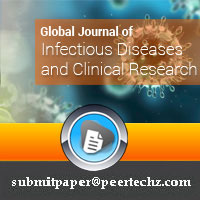Global Journal of Infectious Diseases and Clinical Research
A strategy for finding new medicines against the novel coronavirus disease (COVID-19) derived from base pairing with DNA damages
Katsuhito Kino*, Takayuki Ohshima, Taishu Kawada, Takanobu Kobayashi and Hiroshi Miyazawa
Cite this as
Kino K, Ohshima T, Kawada T, Kobayashi T, Miyazawa H (2020) A strategy for finding new medicines against the novel coronavirus disease (COVID-19) derived from base pairing with DNA damages. Glob J Infect Dis Clin Res 6(1): 060-061. DOI: 10.17352/2455-5363.000038The spread of the novel coronavirus disease (COVID-19) has caused a global pandemic. Exiting agents that act on proteins including 3-chymotrypsin-like protease (3CLpro), papain-like protease (PLpro), helicase, RNA-dependent RNA polymerase (RdRp), spike glycoprotein (S protein), and others in similar viruses [1,2] are likely used as antiviral drugs against the novel coronavirus (SARS-CoV-2). Data on Chemical Abstract Service show that the potential drug candidates against 3CLpro and RdRp are more than those against other targets [2].
Remdesivir is a nucleoside analog and a substrate for RdRps of several RNA viruses [3]. Especially, remdesivir has antiviral activity against SARS-CoV-2 [4]. Remdesivir, which mimics the structure of adenosine and forms the base pair with uridine [4], delayed chain termination of RNA synthesis using RdRps of SARS-CoV-2 [5]. Also, favipiravir, ribavirin and N4-hydroxycytidine forming base pairs [3] are suggested to have broad-spectrum antiviral activities. Therefore, some unknown ribonucleoside analogs capable of forming base pairs are likely to be effective in SARS-CoV-2.
By the way, many DNA damages [6] are ribonucleoside analogs, and the base pairs containing DNA damages were described [3]. Some known and/or unknown DNA damage mimics capable of forming base pairs may be drug candidates for SARS-CoV-2 (The section 13 of the previous review [3]).
There is an urgent need to find new medicines against COVID-19. Instead of synthesizing compounds and examining those effects one by one, the reaction mixtures obtained by the reacting nucleic acid analogs under various conditions are screened as it is, and researchers verify whether each reaction mixture has antiviral activity against SARS-CoV-2. Thereafter some reaction mixtures having antiviral activity are fractionated with high-performance liquid chromatography and so on, and isolating active ingredients will lead to finding any drug candidates quickly (Figure 1). We hope that other researchers will quickly find drug candidates using this strategy, and that COVID-19 will be converged.
- Li G, De Clercq E (2020) Therapeutic options for the 2019 novel coronavirus (2019-nCoV). Nat Rev Drug Discov 19: 149-150. Link: http://bit.ly/2KnH4fU
- Liu C, Zhou Q, Li Y, Garner LV, Watkins SP, et al. (2020) Research and development on therapeutic agents and vaccines for COVID-19 and related human coronavirus diseases. ACS Cent Sci 6: 315-331. Link: http://bit.ly/2KGN5nF
- Kino K, Kawada T, Hirao-Suzuki M, Morikawa M, Miyazawa H (2020) Products of oxidative guanine damage form base pairs with guanine. Int J Mol Sci 21: 7645. Link: http://bit.ly/3p94tAs
- Yin W, Mao C, Luan X, Shen DD, Shen Q, et al. (2020) Structural basis for inhibition of the RNA-dependent RNA polymerase from SARS-CoV-2 by remdesivir. Science 368: 1499-1504. Link: http://bit.ly/3h8vili
- Gordon CJ, Tchesnokov EP, Woolner E, Perry JK, Feng JY, et al. (2020) Remdesivir is a direct-acting antiviral that inhibits RNA-dependent RNA polymerase from severe acute respiratory syndrome coronavirus 2 with high potency. J Biol Chem 295: 6785–6797. Link: http://bit.ly/3awKSWOBian K, Delaney JC, Zhou X, Li D (2019) Biological evaluation of DNA biomarkers in a chemically defined and site-specific
- manner. Toxics 7: 36. Link: http://bit.ly/2WzLBOQ
Article Alerts
Subscribe to our articles alerts and stay tuned.
 This work is licensed under a Creative Commons Attribution 4.0 International License.
This work is licensed under a Creative Commons Attribution 4.0 International License.


 Save to Mendeley
Save to Mendeley
